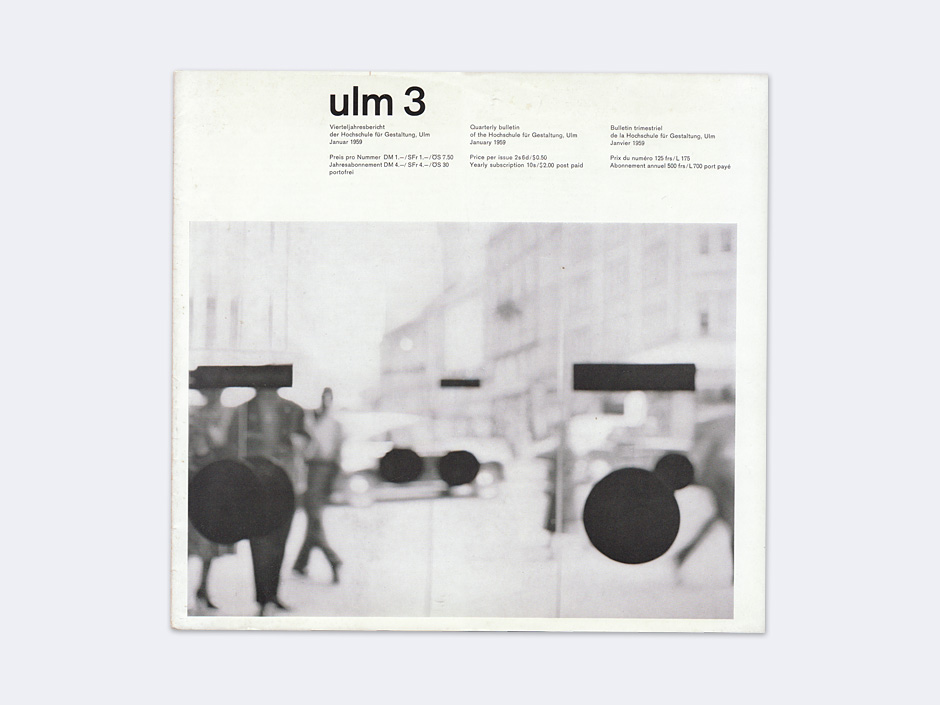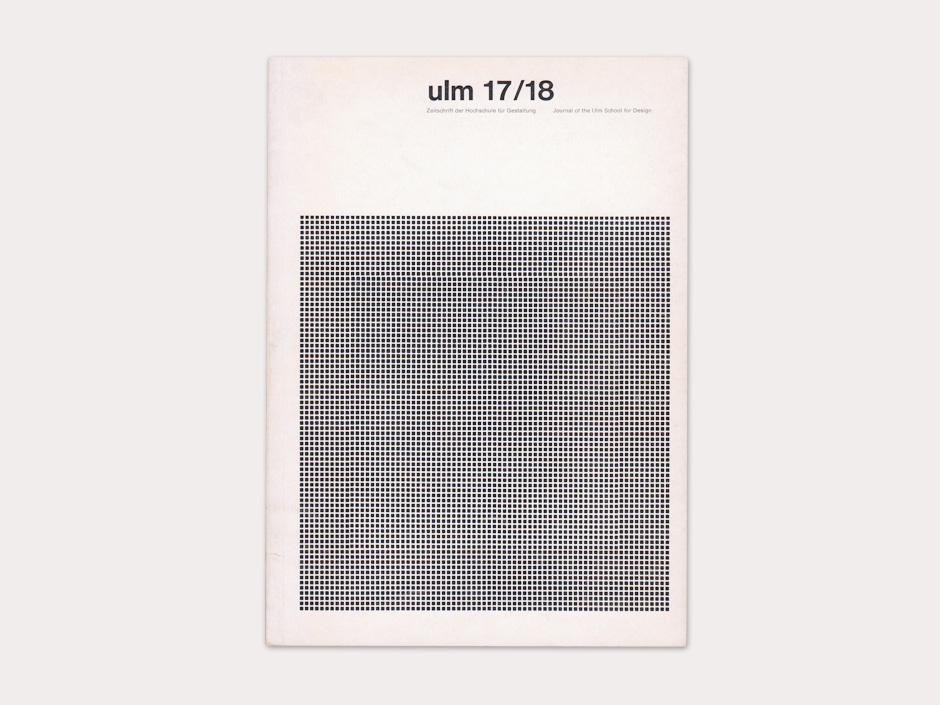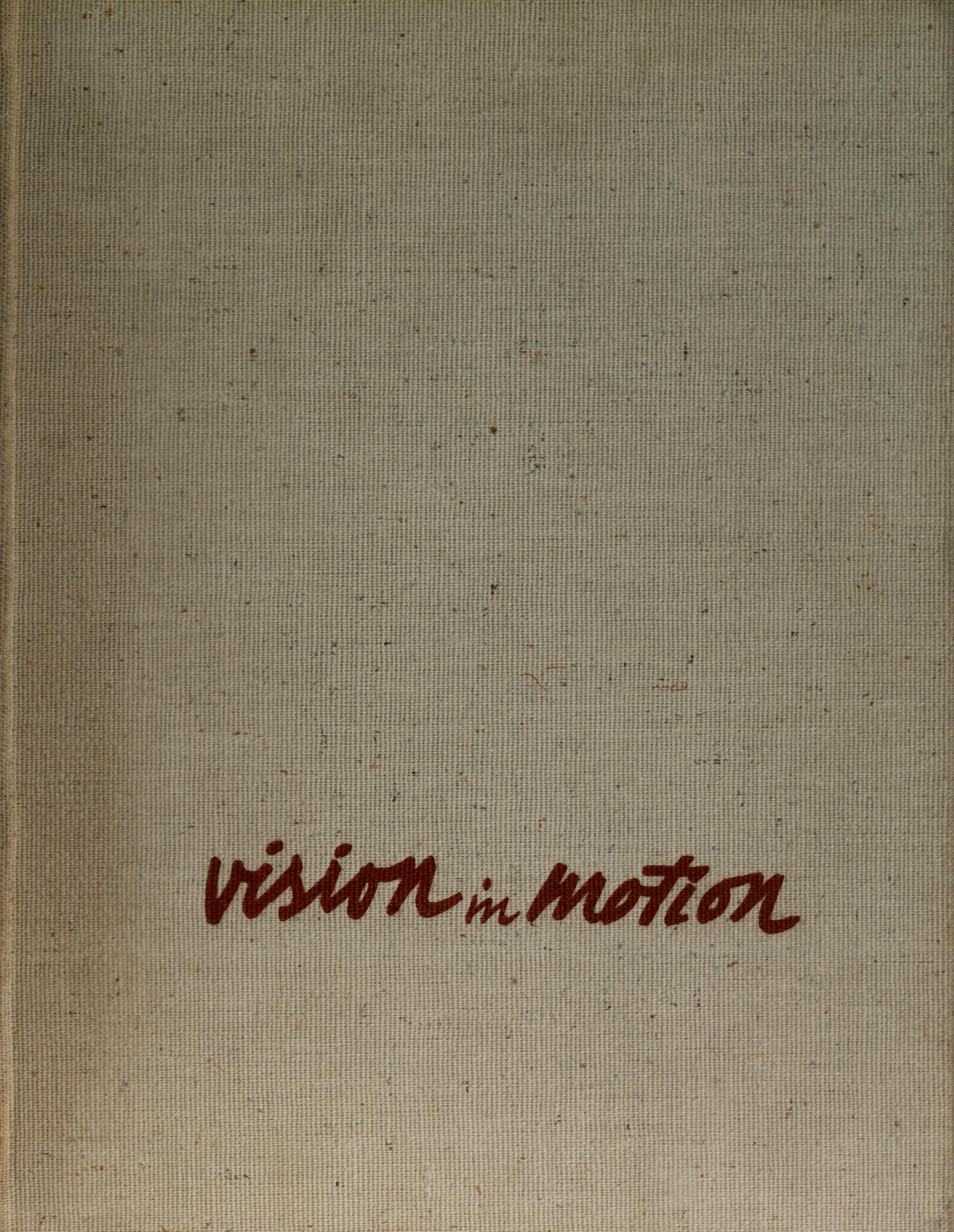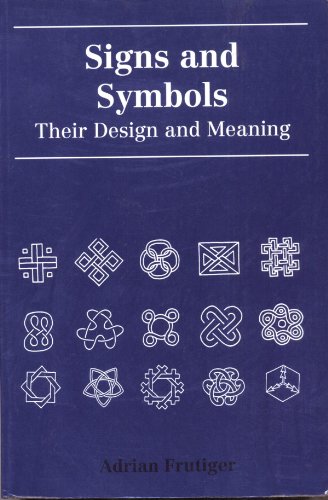ulm: Journal of the Ulm School for Design, 1–21 (1958–68) [EN/DE/FR]
Filed under magazine | Tags: · design, graphic design, industrial design


ulm was a quarterly published from 1958–1968 in 14 issues (21 numbers). This international journal provided a comprehensive account of the theoretical, rational and practical curriculum at one of Europe’s most influential design schools since the Bauhaus. Co-founded by Inge Aicher-Scholl, Otl Aicher and Max Bill, the HfG opened in 1953 (officially in 1955) and closed in 1968. Although the journal’s editorial staff changed over the years, primary figures included: Tomás Maldonado, Hanno Kesting, Gui Bonsiepe and Renate Kietzmann. The first 5 issues were published in English, French and German and subsequent issues in English and German.
via René Spitz
Comment (0)L. Moholy-Nagy: Vision in Motion (1947)
Filed under book | Tags: · abstraction, architecture, art, art education, bauhaus, biology, design, film, image, industrial design, life, light, literature, machine, motion, painting, perception, photography, poetry, sculpture, technology, visual communication, visual poetry

“This book is written for the artist and the layman, for everyone interested in his relationship to our existing civilization. It is an extension of my previous book, The New Vision. But while The New Vision gave mainly particulars about the educational methods of the old Bauhaus, Vision in Motion concentrates on the work of the Institute of Design, Chicago, and presents a broader, more general view of the interrelatedness of art and life.” (from the author’s foreword)
Publisher Paul Theobald, Chicago, 1947
371 pages
PDF (114 MB, no OCR)
Comments (2)Adrian Frutiger: Signs and Symbols: Their Design and Meaning (1978–) [EN, FR, BR-PT]
Filed under book | Tags: · design, graphic design, ornament, print, sign, text, typography, writing

“Universally-recognized signs and symbols have always been among the most important elements of communication. By why is it that certain configurations of dot and line, and certain primary shapes, are perceived and remembered more easily than others? Taking the six faces of dice as his starting point, Frutiger writes about signs and symbols in general and the development of writing in particular. Throughout, he relates the basic principles and components of graphics to a wide range of historical, physical, linguistic and practical considerations. He embraces everything from Egyptian hieroglyphics to modern company logos in his intriguing analysis of the way that humans have always tried to express thought and communication through graphic means. This standard work is aimed at all those concerned with graphics, design, ornament and communication in general.”
Originally published as Der Mensch und seine Zeichen, 3 vols., Weiss Verlag, Dreieich, 1978-81.
English edition
Translated by Andrew Bluhm
Publisher Van Nostrand Reinhold, New York, 1989
ISBN 0442239181
360 pages
WorldCat (EN)
Signs and Symbols: Their Design and Meaning (English, trans. Andrew Bluhm, 1989, low res, 39 MB)
L’Homme et ses signes: signes, symboles, signaux (French, trans. Danielle Perret, 2nd ed., 1999/2014, 5 MB)
Sinais e símbolos: desenho, projeto e significado (BR-Portuguese, trans. Karina Jannini, 2nd ed., 1999/2007, 59 MB, added 2016-8-3)
See also Frutiger’s Type Sign Symbol, 1980.
Comment (1)
